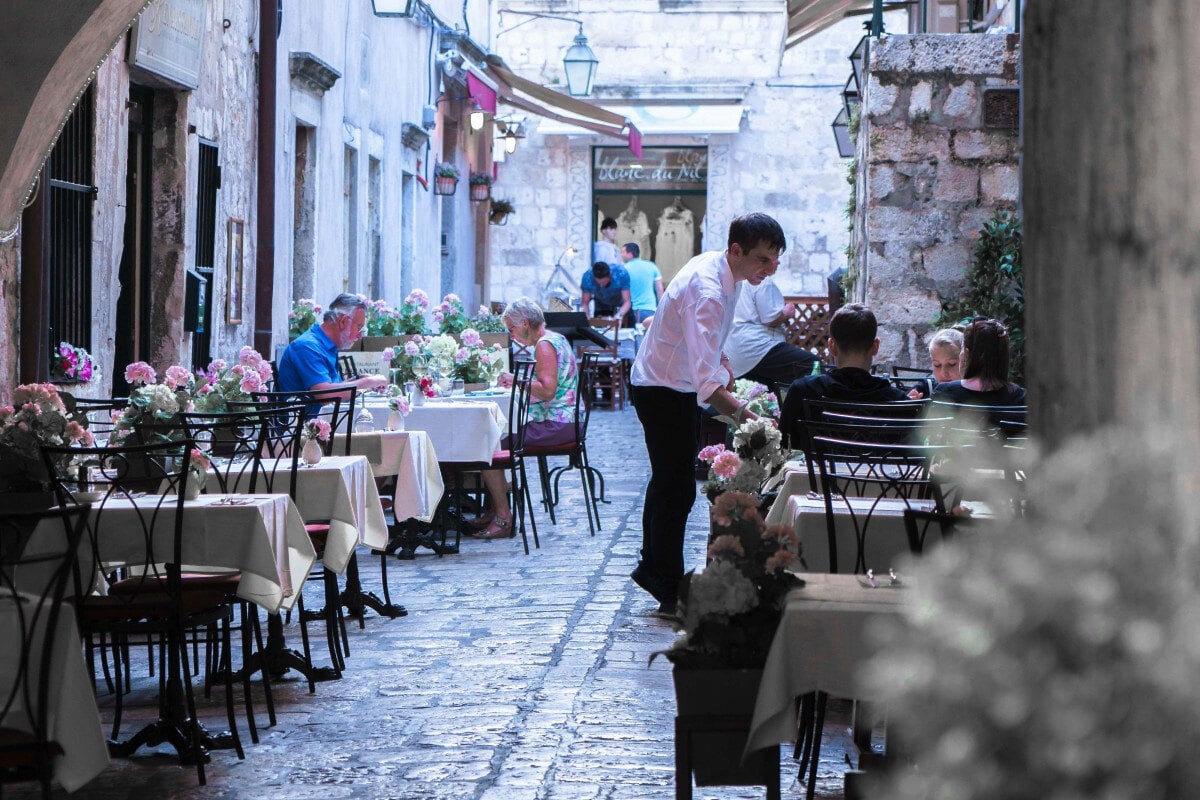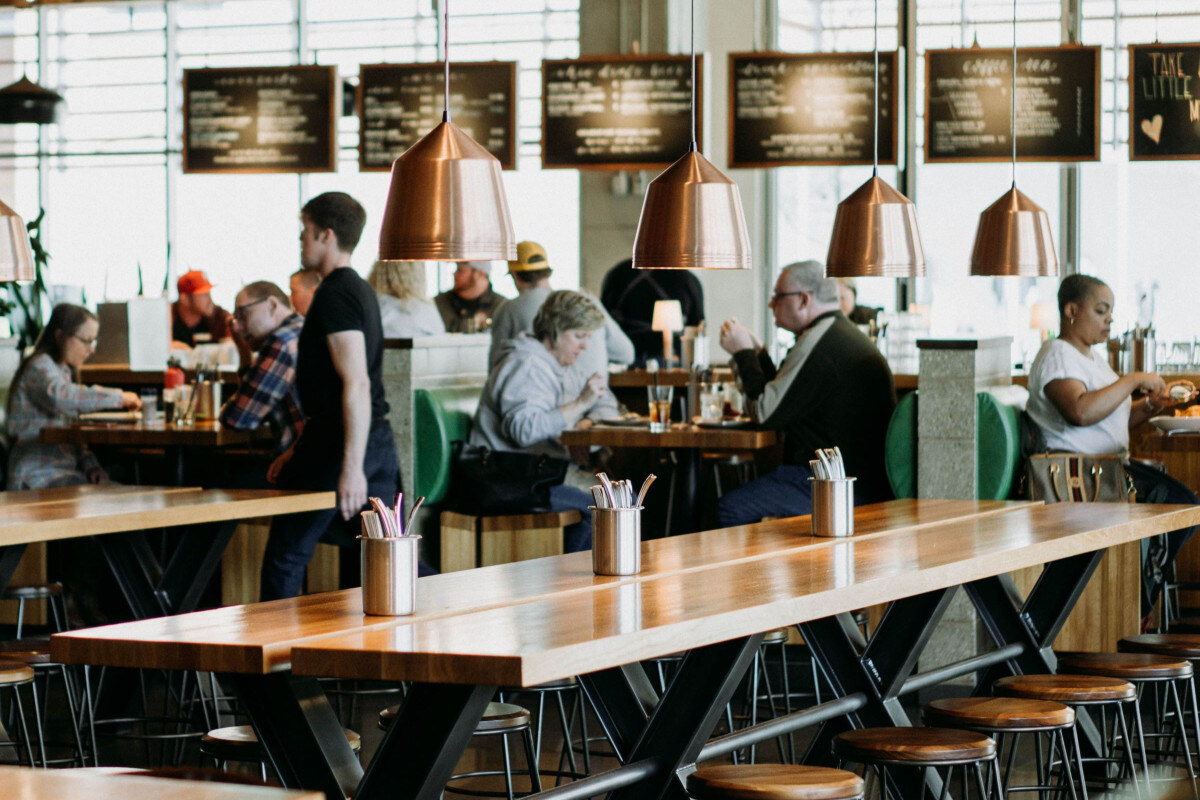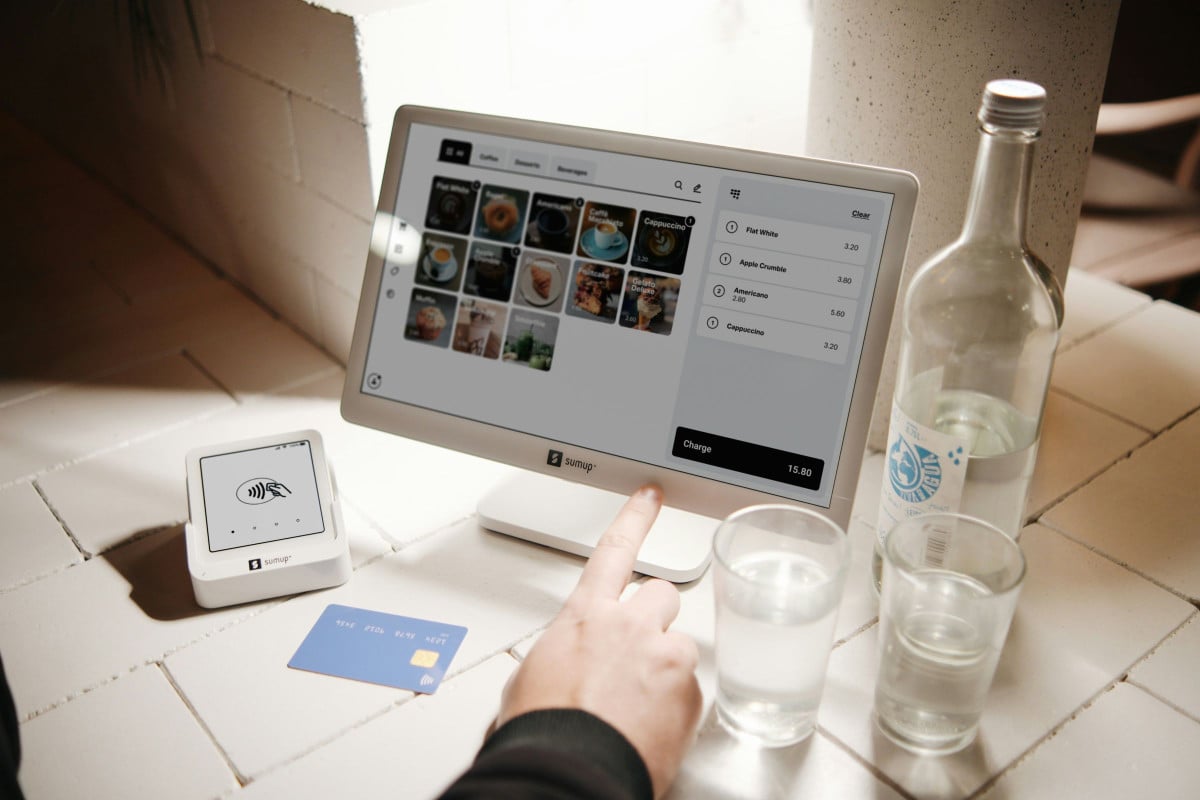11 min read
3 Priorities When Choosing Restaurant Table Management Software
In the restaurant industry, efficiency is no longer a luxury—it’s a necessity. Streamlined operations improve your customer experience and result in...
Platform
What is Paytronix Guest Engagement Suite?
Combining online ordering, loyalty, omnichannel messaging, AI insights, and payments in one suite. Paytronix delivers relevant, personal experiences, at scale, that help improve your entire digital marketing funnel by creating amazing frictionless experiences.
A Complete Guest Engagement Suite
Online Ordering
Acquire new customers and capture valuable data with industry leading customization features.
Loyalty
Encourage more visits and higher spend with personalized promotions based on individual activity and preferences.
Catering
Grow your revenue, streamline operations, and expand your audience with a suite of catering tools.
CRM
Build great customer relationships with relevant personal omnichannel campaigns delivered at scale.
Artificial Intelligence
Leverage the most data from the most customer transactions to power 1:1 marketing campaigns and drive revenue.
Payments
Drive brand engagement by providing fast, frictionless guest payments.
Solutions
Paytronix Guest Engagement Solutions
We use data, customer experience expertise, and technology to solve everyday restaurant and convenience store challenges.
FlightPaths are structured Paytronix software onboarding journeys designed to simplify implementation and deliver maximum ROI.
Customer Success Plans (CSPs) are tiered service offerings designed to help you get the most from your Paytronix software, whether you prefer self-guided support or hands-on partnership.
Contactless Experiences
Accommodate your guests' changing preferences by providing safe, efficient service whether dining-in or taking out.
Customer Insights
Collect guest data and analyze behaviors to develop powerful targeted campaigns that produce amazing results.
Marketing Automation
Create and test campaigns across channels and segments to drive loyalty, incremental visits, and additional revenue.
Mobile Experiences
Provide convenient access to your brand, menus and loyalty program to drive retention with a branded or custom app.
Subscriptions
Create a frictionless, fun way to reward your most loyal customers for frequent visits and purchases while normalizing revenues.
Employee Dining
Attract and retain your employees with dollar value or percentage-based incentives and tiered benefits.
Order Experience Builder
Create powerful interactive, and appealing online menus that attract and acquire new customers simply and easily.
Loyalty Programs
High-impact customizable programs that increase spend, visit, and engagement with your brand.
Online Ordering
Maximize first-party digital sales with an exceptional guest experience.
Integrations
Launch your programs with more than 450 existing integrations.
Loyalty Programs
Deliver the same care you do in person with all your digital engagements.
Online Ordering
Drive more first-party orders and make it easy for your crew.
Loyalty Programs
Digital transformations start here - get to know your guests.
Online Ordering
Add a whole new sales channel to grow your business - digital ordering is in your future.
Integrations
We work with your environment - check it out
Tobacco Reporting
Comply with AGDC 2026 DTP Requirements
Company
We are here to help clients build their businesses by delivering amazing experiences for their guests.
Meet The Team
Our exceptional customer engagement innovations are delivered by a team of extraordinary people.
News/Press
A collection of press and media about our innovations, customers, and people.
Events
A schedule of upcoming tradeshows, conferences, and events that we will participate in.
Careers
Support
Paytronix Login
Order & Delivery Login
Resources
Paytronix Resources
Learn how to create great customer experiences with our free eBooks, webinars, articles, case studies, and customer interviews.
FlexPoint Service Catalog
Access FlexPoints are a cost-effective, flexible way to access our value-added services, to ensure you get greater impact from your Access software solution.
See Our Product In Action
E-Books
Learn more about topics important to the restaurant and c-store customer experience.
Reports
See how your brand stacks up against industry benchmarks, analysis, and research.
Blog
Catch up with our team of in-house experts for quick articles to help your business.
Case Studies
Learn how brands have used the Paytronix platform to increase revenue and engage with guests.
Unlock loyalty strategies that 3 out of 4 restaurants use to boost engagement by 40% without adding staff.
7 min read
Oct 22, 2025

Fragmented software across different departments can lead to inefficiencies, miscommunication, and missed opportunities to act on real-time operational data. Restaurant management software helps streamline restaurant operations and improve profitability through automation.
Software, such as point-of-sale (POS) systems, built-in online ordering platforms, inventory management, and loyalty programs, improves the customer experience. These tools adapt to each business’s unique needs in the restaurant and food service industry.
Cloud-based, scalable, and user-friendly platforms reduce training time, support multilocation management, and provide actionable insights to help restaurants respond quickly to changing guest demands. Many platforms also integrate with third-party services, provide detailed dashboards, and track food costs for smarter decision-making.
The United States restaurant management software market generated USD 1,561.4 million in 2024 and projects to reach USD 3,355.2 million by 2030, according to Grand View Research. This article will cover the essential types of software every quick service restaurant (QSR) or full service restaurant (FSR) should consider to stay competitive and efficient.
A POS system integrates sales and handles table management, order entry, payments, employee clock-ins, scheduling tools, and sales tracking in one platform. Centralized control supports staffing, inventory, marketing, and guest engagement, ensuring smooth service across the restaurant.
Restaurant POS software suits different business types—from QSRs to FSRs. These systems store guest data, such as birthdays, order preferences, and visit frequency, supporting personalized service and customer loyalty programs.
Front-of-house POS systems automate orders and payment management, helping staff manage reservations efficiently, track service flow, and reduce errors. This leads to smoother operations and improved guest experiences.
The intuitive interface of modern POS systems ensures staff can learn quickly and minimize manual data entry errors. For example, Square POS and Toast provide cloud-based POS systems that simplify order entry, payments, reporting, and advanced features like real-time sales analytics.
Modern POS also supports third-party delivery services and direct online orders, consolidating multiple sales channels. Mobile/tablet POS devices allow tableside ordering, helping staff serve faster, reduce wait times, and enhance the overall dining experience.
Controlling food costs, reducing food waste, and ensuring order accuracy are critical. Real-time inventory tracking helps staff know what’s in stock and supports multilocation management. Managers can transfer ingredients between locations to avoid shortages and minimize spoilage.
Restaurant inventory management system tools prevent over-ordering or running out of supplies by tracking usage and sending low stock alerts. Systems include specific tools for cost control and efficient order management across multiple locations.
Kitchen display systems (KDS) link directly to POS, sending orders to kitchen staff instantly and displaying special requests clearly. This reduces mistakes, speeds up preparation, and ensures guests get exactly what they ordered.
Modern inventory management systems support auto-reordering from suppliers and predictive analytics to forecast demand. This reduces food costs and ensures optimal stock levels while integrating with KDS and online order platforms. Alerts notify staff of low stock or near-expiry items, maintaining operational flow.
Restaurants must track sales, expenses, payroll, and labor costs while uncovering opportunities for profit improvement. Accurate financial data enables informed decisions.
Accounting software helps restaurant owners monitor finances and uncover critical insights. Many front-of-house systems include analytics that show labor costs, sales trends, and profit margins, supporting smarter operational decisions.
Reliable tools, such as QuickBooks, Xero, and Sage, have wide usage because they integrate seamlessly with accounting and POS systems, including receipt printers and cash drawers. This ensures synchronized data flow across sales, inventory, and payroll, reducing errors and saving time.
Advanced accounting tools now automate restaurant payroll, taxes, and tip calculations while offering real-time labor cost dashboards. Managers can monitor productivity, overtime, and shift efficiency, making data-driven staffing and pricing decisions without manual data entry.
Back-office integration plays a key role in the guest-facing side of the business. Menu management and digital ordering systems help restaurants operate smoothly while meeting modern guest expectations.
Menu management software allows restaurants to handle menu updates across locations quickly and accurately. Changes, like new items, pricing, or availability, sync in real time, ensuring consistency across all channels.
Online ordering software integrates with POS to reduce wait times, minimize errors, and inform guests about menu availability. Built-in upselling and promotions help drive online sales.
The rise of third-party delivery apps and branded mobile apps requires seamless integration with POS. Features like real-time inventory updates, dynamic menus, and integrated payments enhance customer satisfaction and operational efficiency.
Direct online orders processed through integrated systems reduce dependency on external platforms, keeping profit margins higher, lowering third-party fees, and providing richer data for marketing and loyalty programs. Many systems also support curbside pickup and food delivery, giving guests more flexibility while maintaining seamless communication with the kitchen.
Good restaurant software integrates customer relationship management (CRM) software with inventory, POS, and other tools to streamline operations. Loyalty programs are increasingly popular because they offer more than food—they provide rewards and personalized experiences that encourage repeat visits.
CRM software for restaurants provides access to guest data, sales analytics, and preference insights. This lets owners make data-driven decisions about menu items, marketing campaigns, and service improvements.
Loyalty platforms reward guests with discounts, free meals, or merchandise, boosting retention and encouraging repeat visits. By combining CRM and loyalty tools, restaurants can enhance the customer experience, strengthen relationships, and increase satisfaction and sales.
Modern restaurants leverage CRM and loyalty to improve customer engagement, delivering personalized recommendations, rewards based on visit history, and segmented notifications. A branded mobile app also helps reinforce engagement and track customer trends.
Building on CRM and loyalty programs, restaurant marketing automation helps engage both loyal guests and new guests without extra manual effort. The system integrates seamlessly with POS and loyalty platforms, using purchase history to send personalized emails, short message service (SMS), or app notifications for birthdays, promotions, and new menu items.
These tools provide detailed reporting on each campaign’s performance, highlighting what drives repeat visits and attract new guests. Insights from the data help managers quickly adjust messaging, promotions, and timing to maximize return on investment (ROI).
Integrated systems benefit the entire restaurant business by keeping employees and managers on the same page. Shared platforms provide visibility into shifts, schedules, and compliance, making day-to-day operations smoother while highlighting key features that enhance guest satisfaction.
Management software provides an all-in-one solution to improve efficiency and reduce food waste. It can schedule staff effectively, cut labor costs, and prevent understaffing during busy periods.
Proper employee management software also ensures compliance with local labor laws, tracking hours, breaks, and overtime accurately. Users can tailor popular solutions to different restaurant types, from quick service to full-service operations, helping managers stay organized and operations running efficiently.
To scale operations, chains and independent restaurants adopt integrated systems connecting management, POS, and data analytics. This enables fast, strategic decisions, optimizes workflows, and ensures consistent service even across multiple locations and rotating staff.
Artificial intelligence (AI) is transforming how restaurants operate. Modern, user-friendly management systems now integrate AI tools that forecast demand, reduce waste, and personalize marketing campaigns within an all-in-one system.
For restaurant owners, this means real-time insights that simplify decision-making, improve resource planning, and improve guest satisfaction. AI-driven analytics help businesses stay efficient, competitive, and ready for what’s next in the future of the restaurant industry.
A well-integrated ecosystem allows restaurants to connect all their tools and platforms, creating a seamless data flow across operations. This makes it easier to manage daily tasks, reduce errors, and improve overall efficiency.
Modern restaurant software can connect with over 500 different apps and tools through secure, open application programming interfaces (APIs). This enables seamless integration with preferred systems, from POS to accounting, enhancing day-to-day operations.
Integration expands platform capabilities, supporting growth and scalability as business needs change. By connecting key systems, restaurants can streamline operations, improve profitability, and adapt quickly to evolving guest and operational demands.
Security is as important as smooth restaurant operations. As technology adoption grows, restaurants face increased risks, making cybersecurity essential to protect sensitive guest and business data while maintaining a reliable support team.
Restaurant software now safeguards guest and business information, following global privacy and security standards. This prevents data breaches and ensures trust with both staff and guests.
24/7 support helps restaurants resolve technical issues quickly and maintain smooth operations. Combining robust security with a reliable support team allows restaurants to protect data, maintain trust, and improve operational efficiency.
Data is one of the most powerful tools for restaurants. Understanding who your guests are, what they order, peak hours, menu preferences, and how guests use loyalty rewards is key to improving operations and learning from past performance.
Restaurant software provides access to over 200 real-time, detailed reporting tools offering insights into customer trends, sales, and operational performance. Managers can make data-driven decisions that improve efficiency and profitability.
Comprehensive analytics help track growth, identify areas for improvement, and support continuous optimization. By analyzing trends, restaurants can adjust menu items, pricing, and marketing strategies to enhance customer experience and increase sales.
The application of enterprise resource planning (ERP) systems is increasing in restaurants to unify operations, streamline workflows, and support business growth. Integrating technology with restaurant management allows teams to focus on strategic priorities rather than manual tasks.
Restaurants can integrate platforms like Restroworks with ERP systems to automate key processes and optimize day-to-day operations. For example, ERP systems can streamline inventory, accounting, and payroll while connecting to POS systems, freeing up time for managers to focus on core business decisions.
Linking ERP with restaurant software ensures seamless data flow across operations. It enables informed decisions that support profitability and scalable growth.
Running a food business involves many moving parts, from customer engagement to back-of-house operations. These frequently asked questions address common questions about software and efficiency tools, helping restaurant operators make informed decisions and get the most from their systems.
Integration ensures real-time stock updates, tracking inventory automatically across locations and syncing ingredient levels with menu items. This reduces ingredient shortages and overstocking. Kitchen staff can prioritize prep tasks based on accurate demand forecasts, improving speed, reducing waste, and maintaining consistent food quality.
Modern restaurant management systems include end-to-end encryption, role-based access, and regular updates to protect sensitive information. By monitoring transactions and guest behavior patterns, these tools detect potential breaches early and ensure compliance with privacy regulations, maintaining guest trust and business integrity.
Data analytics identifies top-selling items, underperforming dishes, and peak ordering times. Restaurants can adjust pricing, portion sizes, or promotions, refine recipes, and make informed menu decisions that enhance profitability and match evolving guest preferences.
Restaurants can unify loyalty points across locations, send personalized offers based on visit history, and track cross-location trends. This creates a consistent experience, increases customer retention, and gives managers actionable insights to improve service and menu performance.
Integrated platforms and all-in-one systems offer built-in training modules and dashboards that guide employees through daily tasks. By connecting POS, scheduling, and advanced inventory management systems, restaurant owners can monitor staff efficiency, reduce onboarding time, and maintain smooth service across all shifts.
Integrated software impacts every aspect of operations. Restaurant POS systems speed up orders and table management, inventory and kitchen tools minimize food waste, and accounting software keeps finances organized. Menu management and online ordering enhance customer satisfaction while CRM and loyalty programs strengthen repeat visits.
Management tools streamline staff schedules, integrations support growth and robust security, support, and analytics protect data while providing actionable insights. ERP systems automate workflows, allowing a restaurant manager to focus on strategic decisions.
Request a demo from Paytronix to explore the best restaurant software with restaurant-specific tools for your business, including loyalty platforms, CRM, marketing automation, and mobile apps that enhance the guest experience, drive repeat visits, and boost sales.
Additionally, download the 2025 Economic Resilience Toolkit to gain insights and strategies tailored for the restaurant industry, helping your business navigate challenges and capitalize on growth opportunities.

11 min read
In the restaurant industry, efficiency is no longer a luxury—it’s a necessity. Streamlined operations improve your customer experience and result in...

10 min read
You have to juggle a lot of moving parts to run a culinary business. Your restaurant payment system shouldn't add complexity. It should simplify...

15 min read
In the high-labor, low-margin restaurant industry, every screen and piece of tech your restaurant uses needs to work more efficiently.